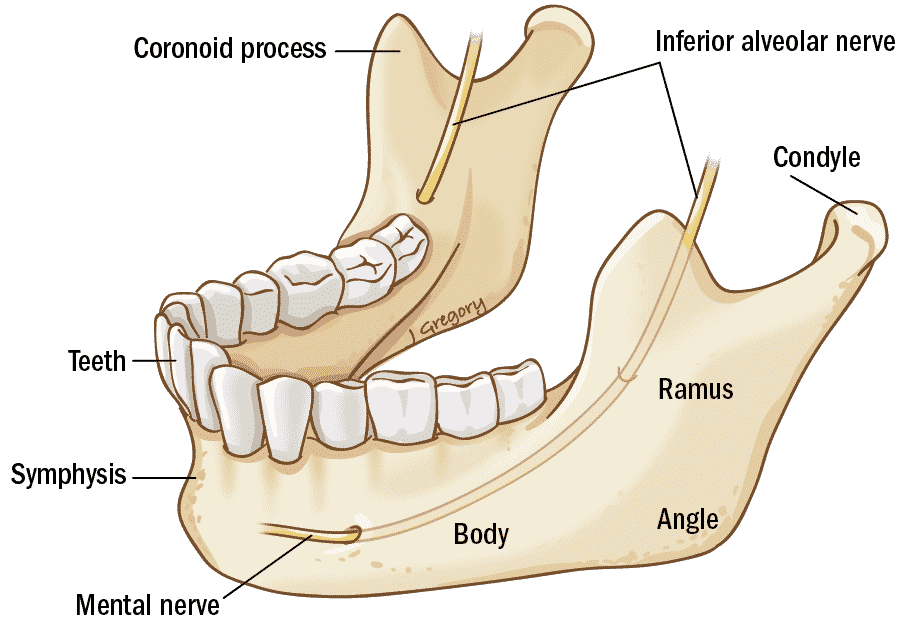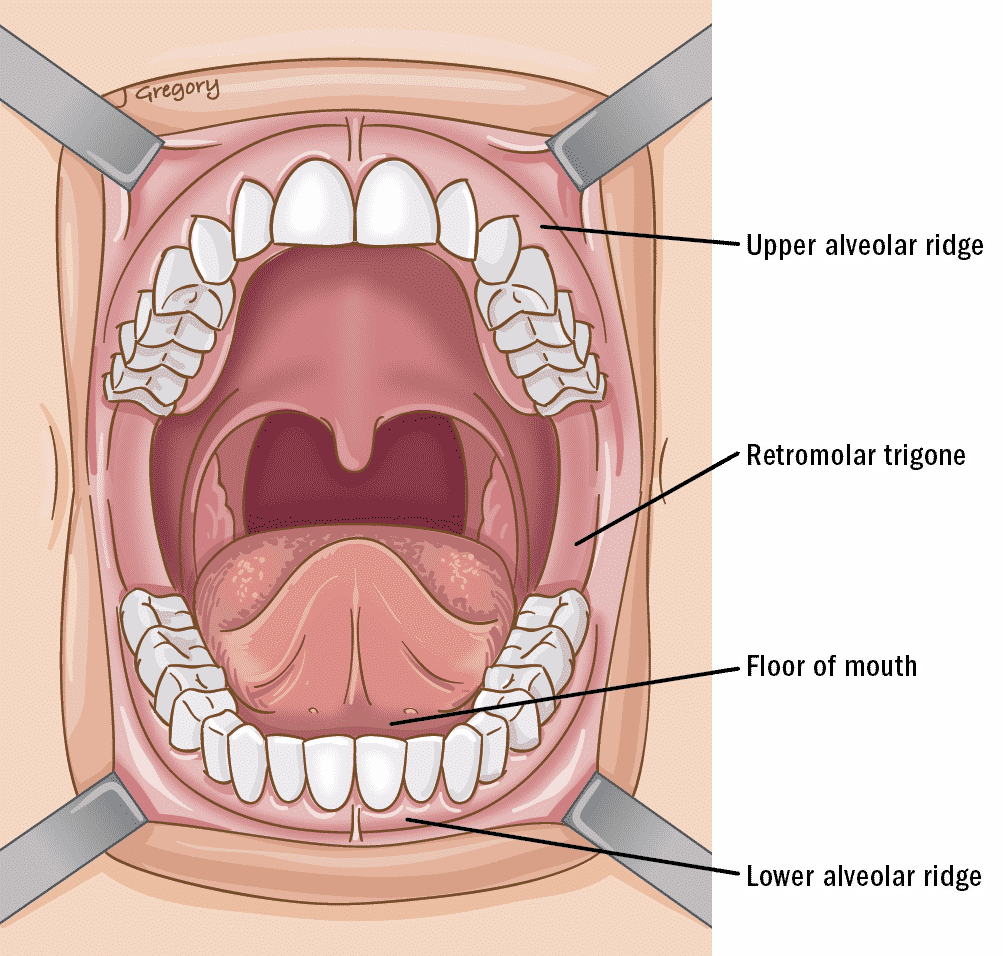In order to understand mandibular cancer, it is important to gain some background knowledge on the surrounding anatomy. The term “mandible” refers to the lower jawbone. Mandibular cancers are those that start in the gums, or gingiva, and grow into the mandible, and rarely those that originate in the mandible itself.
The Mandible

The mandible is made up of a right half and a left half which are fused together at the mandibular symphysis at the center of the jaw. Other areas of the mandible include the body, angle, ramus, and condyle. The mandibular condyles (one on either side) are important parts of the temporomandibular joint (TMJ), or the joint between the mandible and the skull. This joint allows the jaw to move so that a person can talk and chew food.
The mandible contains many important structures, including the lower teeth and the inferior alveolar nerve, which gives sensation to the lower lip as well as the lower teeth. The inferior alveolar nerve passes through a canal in the middle of the mandible and exits from the body to become the mental nerve, which provides sensation to the lower lip. Each side of the mandible has one of these nerves, which provide sensation to the regions on the respective side. One or both of these nerves may be affected by mandibular cancer, depending on where the cancer invades the mandible.
Gingiva
The term “gingiva” refers to the gums in the mouth.
Some gingival cancers do not spread, and remain cancers of the gums. However, some cancers that originate in the gingiva or in other parts of the oral cavity (the mouth) may invade the mandible.
Where Tumors Tend to Arise
- Floor of Mouth
This is the area under the tongue at the front and side of the mouth, which extends from the gingiva on the inside of the lower jaw to the very beginning of the undersurface of the tongue. The lingual frenulum is the narrow piece of mucosa that separates the right and left sides of the floor of the mouth. - Lower Alveolar Ridge
This refers to the bone that houses the lower teeth, as well as the adjacent pink mucosa. - Upper Alveolar Ridge
This refers to the bone that houses the upper teeth, as well as the adjacent pink mucosa. - Retromolar Trigone
This is the lining at the very back corner of the mouth behind the last tooth on either side.














